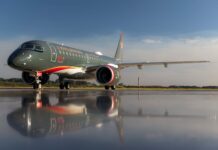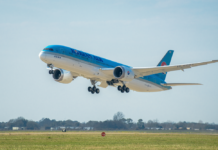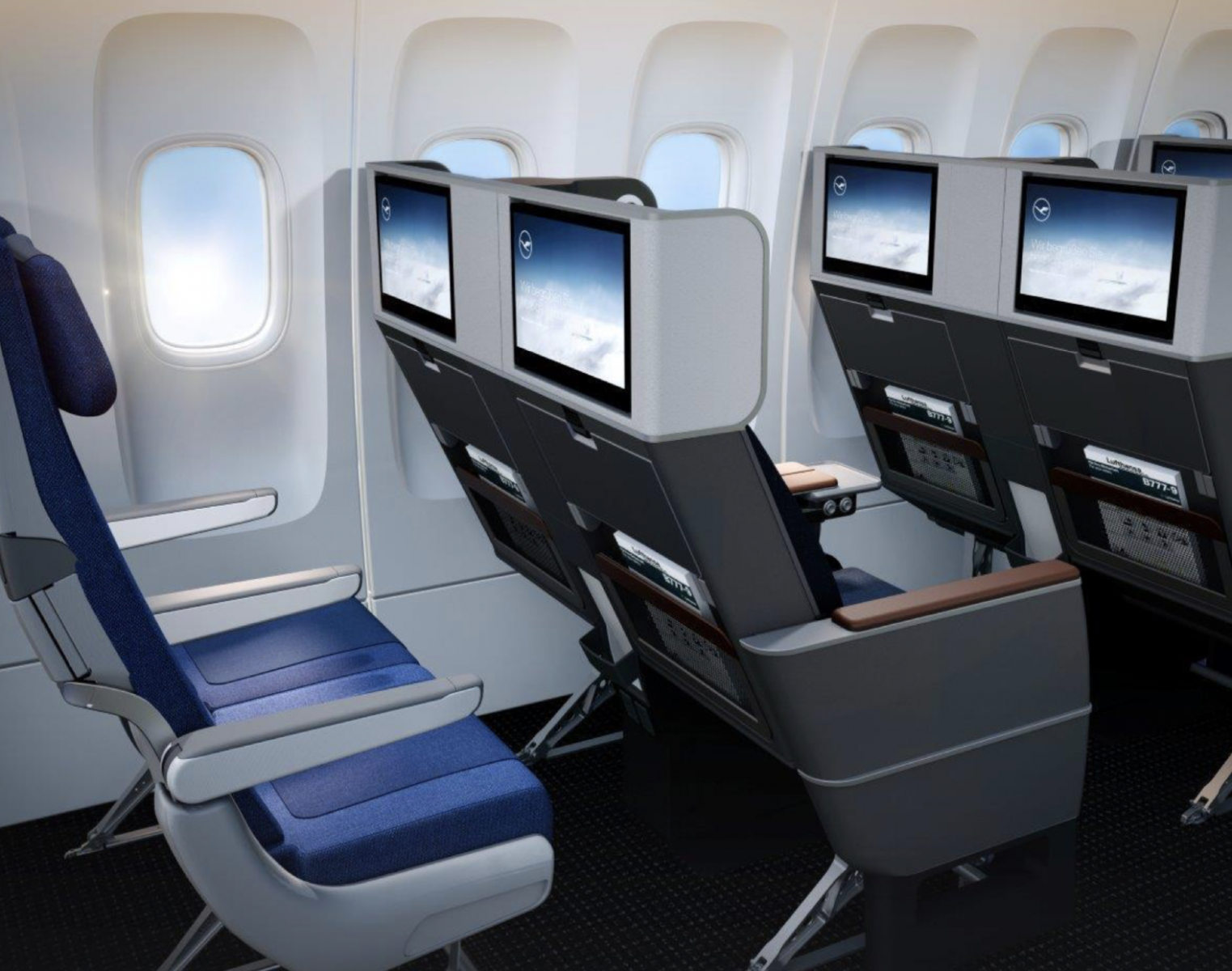Premium economy is an odd beast.
Debuting in the early 1990s, the basics of the seat haven’t changed much on most airlines since Virgin Atlantic and EVA Air created it: seats around 19 inches wide with about 38 inches of pitch and one to two fewer seats in each row than regular economy class.
There have been proposals for change and indeed attempts: Air New Zealand shot itself in the foot with its Spaceseat, debuting early this decade on the airline’s Boeing 777-300ER.
READ: Crafty Kiwi inflight cocktails feature alcohol-free gin.
The concept that had been so revolutionary and exciting in the top-secret hangars didn’t translate to what was on the aircraft in one key way: pitch, meaning legroom.
The airline initially insisted nothing was wrong, then went through an expensive climbdown and refit process, and finally canned the seats entirely for a standard product that does, in fairness, have a few inches more legroom than average.
On to Lufthansa, which reminded the industry in its Capital Markets Day presentation that premium economy is the most “productive” cabin in terms of revenue per area: six percent higher than business class and a full 33 percent higher than economy.

Lufthansa’s premium economy hard product these days is from seat maker ZIM and it’s a fine if very middle of the road product.
The problem for the airline is the soft product is far too similar to economy; there is no cabin differentiation and you essentially get economy service in a nicer seat.
The only difference I noticed last time I flew premium economy — apart from the seat — was that the doggy-dish dinner was served slopped up the sides of a china bowl rather than a plastic one.

So it’s interesting that the airline is looking to upgrade a hard product that’s pretty fine at this point and certainly much better than Lufthansa’s existing business class, which is 10-20 years out of date.
The new hardshell seatback product will be launched on the Lufthansa Boeing 777-9, which in theory should be arriving in the third quarter of 2020.
I say ‘in theory’ because General Electric just announced a delay to the engines of some months, so the new product may well end up arriving on the Swiss Boeing 777-300ER instead, which will be refitted starting Q1 of 2021.
Somewhat impressively for Swiss’ elderly Airbus A340-300 aircraft, the product will then be rolled out to these widebodies from Q1 2021.
The product, which appears to slide forward in recline, looks OK but seems at this point somewhat unnecessary.
Lufthansa will only start competing on the basis of product in business class product once its new seats with direct aisle access start arriving, also in theory on the 777-9.
It’s therefore unclear why anyone upgrading out of the airline’s very basic economy class seating to its existing premium economy might need further incentivization to do so.
Indeed, it is unusual for an airline to create a premium economy seat that might tempt passengers in its sub-par business class to downgrade on the basis of saving cold, hard euros.
I must also wonder at the odd lack of cabin differentiation that Lufthansa’s rendering seems to show.
One could expect premium economy on the 777-9 to be in a 2-4-2 layout, which is the standard for 777s. Indeed, the single shot we have has two seats adjacent to the window.
But it also has two economy seats immediately behind. One would expect a 3-4-3 configuration on the 777 in economy class.
Lufthansa, of course, doesn’t even have a frilly curtain to separate premium economy and regular economy, so it may well need to have the two economy seats to allow trolleys and luggage to pass by.
But it seems a missed trick to install largely unnecessary new hard product — a status quo unlikely to change in the first cabin life of these aircraft — while keeping the less positive aspects of the premium economy presentation.
























